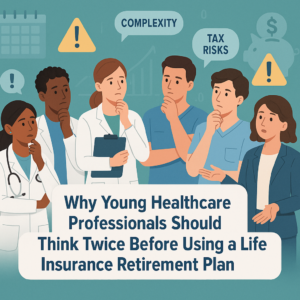In this blog post, we will explore how to optimize your financial resources by prioritizing debt repayment and building a reliable financial safety net. By understanding your financial health and making informed decisions, you can lay the foundation for long-term financial security.
Assessing Your Financial Situation
Before you can make informed financial decisions, it’s essential to have a clear picture of your current financial situation. This involves a detailed analysis of your income, expenses, debts, and savings. Here’s a breakdown of how to accurately evaluate your financial health:
Income vs. Expenses
- Track your monthly income, including salary and any additional revenue sources such as consulting fees or side jobs.
- List all your monthly expenses, including rent or mortgage payments, utilities, groceries, transportation, and discretionary spending.
Debt Inventory
- Compile a list of all outstanding debts, which might include credit cards, car loans, student loans, and mortgages.
- Note the interest rate and minimum monthly payment for each debt to understand their long-term impact on your finances.
Savings and Emergency Funds
- Review your savings accounts, including any dedicated emergency funds.
- Calculate how many months of living expenses your savings can cover, aiming for at least three to six months.
Prioritizing Debt Repayment
Determining which debts to pay off first can significantly impact your financial health. Prioritizing high-impact debts, particularly those with higher interest rates, can help you save money in the long run and free up cash for other financial goals.
High-Impact Debt Repayment
High-interest debts, such as credit card bills and certain personal loans, can accumulate quickly if not addressed. Paying these off first should be a priority. Here’s why:
Interest Accumulation:
- High-interest debts grow faster due to compounded interest.
- Reducing these balances lowers the overall interest paid over time.
Improved Cash Flow:
- Eliminating high-interest debts can help free up monthly cash flow that can be redirected to other financial goals, like saving for a down payment on a house or investing.
Enhanced Credit Score:
- Reducing high-interest debt can improve your credit utilization ratio.
- This, in turn, can boost your credit score, making it easier to qualify for favorable loan terms in the future.
Practical Steps for High-Impact Debt Repayment
Here are actionable strategies to tackle high-interest debts:
Debt Avalanche Method:
- Focus on paying off the debt with the highest interest rate first while making the minimum payments on others.
- Once the highest-interest debt is cleared, move on to the next highest, and so on.
Debt Snowball Method:
- Focus on paying off the smallest debt first to gain momentum and psychological benefits.
- Once the smallest debt is cleared, move those payments to the next smallest debt.
Consolidation Options:
- Explore options for consolidating high-interest debts into a lower-interest loan.
- This can streamline payments and reduce the overall interest.
Building and Maintaining a Safety Net
A robust emergency fund is a critical component of financial security. This safety net ensures you are prepared for unexpected expenses, such as medical emergencies, job loss, or critical home repairs.
The Importance of an Emergency Fund
Having a well-funded emergency reserve can prevent you from relying on high-interest debt in times of crisis. Here are the key benefits:
Stress Reduction:
Knowing you have a financial buffer can alleviate stress and provide peace of mind.
Financial Stability:
An emergency fund helps you manage sudden expenses without derailing your long-term financial goals.
Independence:
You’re less reliant on loans and credit cards, which can accumulate interest and debt.
How Much to Save
Determining the appropriate amount for your emergency fund depends on various factors, including your monthly expenses, income stability, and personal circumstances. Here are some guidelines:
Three to Six Months’ Worth of Expenses:
This is a common recommendation. Calculate your essential monthly expenses (housing, food, utilities, transportation, insurance), and multiply by three to six.
Personal Risk Factors:
- If you have a relatively stable job (e.g., a tenured physician), three months’ worth might suffice.
- If your income is less predictable or if you have dependents, consider saving enough to cover six months or more.
Health and Lifestyle Considerations:
- Account for potential medical expenses, especially if you or dependents have ongoing healthcare needs.
- Factor in lifestyle choices and obligations, such as supporting family members or education expenses.
Where to Keep Your Emergency Fund:
Consider keeping your emergency fund in a high-yield savings account or money market account. These options provide easy access to your money while earning some interest.
Periodic Reviews:
Regularly review and adjust your emergency fund based on life changes such as marriage, having children, job changes, or significant purchases. Ensure your fund remains adequate to cover your necessary expenses.
Balancing Debt Repayment and Savings
The debate between paying off debt and saving money is common among young professionals. Balancing these two goals is essential for overall financial health.
Strategies for Balancing Debt and Savings
Here are some strategies for achieving a balance that aligns with your financial goals:
Simultaneous Approach:
- Allocate a portion of your disposable income to both debt repayment and savings.
- For example, you might use 70% of extra funds for debt and 30% for savings, adjusting the ratio as debts decrease.
Emergency Fund First:
- Prioritize building an emergency fund before aggressively paying off debts.
- Once a sufficient emergency fund is established, shift focus to debt repayment.
Employer-Paid Benefits:
Leverage any employer-provided benefits, such as loan repayment assistance or retirement savings plans. These can supplement your efforts.
Power of Compound Interest:
Starting to save early, even while repaying debt, is crucial due to the power of compound interest. The earlier you start saving and investing, the more you can benefit from the compounding growth of your investments.
Case Studies: Practical Examples
To illustrate these strategies in action, let’s consider some hypothetical scenarios for different healthcare professionals:
Dr. Smith, A Young Physician
- Income: $150,000 annually
- Debts: $200,000 student loans at 4.5%, $15,000 car loan at 7%, $5,000 credit card debt at 18%
- Savings: $8,000 emergency fund
Strategy:
- Immediate Priority: Use the debt avalanche method to pay off the $5,000 credit card debt due to its high interest.
- Next Steps: Focus on the car loan next while maintaining minimum payments on the student loan.
- Emergency Fund: Continue adding to the emergency fund to reach six months of expenses ($30,000 target).
Nurse Johnson
- Income: $70,000 annually
- Debts: $50,000 student loans at 3.5%, $12,000 personal loan at 9%
- Savings: $10,000 emergency fund
Strategy:
- Immediate Priority: Use extra monthly income to pay off the $12,000 personal loan first.
- Balanced Approach: Split disposable income between increasing the emergency fund and making extra student loan payments.
- Emergency Fund Goal: Aim to save $21,000 (six months of essential expenses).
Pharmacist Davis
- Income: $110,000 annually
- Debts: $65,000 student loans at 5%, $20,000 home improvement loan at 6.5%, $7,000 on a line of credit at 10%
- Savings: $5,000 emergency fund
Strategy:
- Immediate Priority: Pay off the line of credit due to the high-interest rate.
- Emergency Fund Building: Simultaneously increase emergency fund contributions to build a three-month buffer ($15,000 target).
- Next Steps: After the line of credit, focus on the home improvement loan, then the student loans.
Dr. Lee, a Physical Therapist
- Income: $80,000 annually
- Debts: $50,000 student loans at 5%, $10,000 personal loan at 8%, $3,000 credit card debt at 20%
- Savings: $6,000 emergency fund
Strategy:
- Immediate Priority: Pay off the $3,000 credit card debt first.
- Next Steps: Focus on the personal loan while maintaining minimum payments on the student loan.
- Emergency Fund: Aim to increase emergency fund to $20,000 (six months of essential expenses).
Actionable Tips
To make the most of your extra income, consider these practical tips:
1. Create a Detailed Budget:
- Use budgeting tools or apps to track your income and expenses.
- Regularly review and adjust your budget to reflect changes in your financial situation.
2. Cut Unnecessary Expenses:
- Identify and eliminate non-essential spending.
- Look for cost-saving opportunities in your daily routine, such as meal prepping or using public transportation.
3. Set Clear Financial Goals:
- Define short-term and long-term financial goals, such as paying off a specific debt or saving for a down payment on a home.
- Establish a timeline for reaching your goals and track your progress.
4. Automate Savings and Debt Payments:
- Set up automatic transfers to your savings account.
- Schedule automatic payments for debts to ensure consistency and avoid late fees.
5. Seek Professional Advice:
- Consult with a financial advisor to create a personalized financial strategy.
- Regularly review your plan and make adjustments as needed.
6. Invest Early:
- Take advantage of compound interest by starting to invest early.
- Even small, regular contributions can grow significantly over time.
7. Understand Tax Advantages:
- Learn about tax benefits, such as deductions for continuing education or professional dues.
- Utilize retirement accounts like IRAs or 401(k)s, which offer tax advantages.
8. Leverage Professional Advice:
- Seek advice from financial professionals who understand the unique challenges and opportunities in your field.
- Regularly review your financial plan with a professional to stay on track.
Strategic financial planning is essential for achieving long-term stability and success, especially for young professionals facing unique financial challenges. Assess your current situation, prioritize debt repayment, build a robust safety net, and balance your financial goals to maximize the impact of your extra income.
By taking proactive steps, you can ensure a secure financial future and focus on your professional and personal growth.
Consider scheduling a consultation with a financial advisor to discuss personalized financial strategies and make informed decisions about your financial future. Taking this step can help you navigate your unique financial journey with confidence.
Disclaimer:
This blog post is for informational purposes only and does not constitute financial advice. Each individual’s financial situation is unique. Consult with a financial advisor for advice tailored to your personal circumstances.







